plmeek
40 Cal.
I don't know. You would have to call each dealer and ask them.sass2924 said:Any dealers still have one in stock or are they all dried up?
steve losey said:Thanks for your comments I try to use a lot of the rifle shops hardware and locks I have one on the bench right now. The reason I use the chambers lock is, it is sooooo much faster an easier to get but I would like to find a place that has the correct cock that will work on a chambers lock dont know if the one on the rifle shops lock would work.
The interest in this style lock and interest in trade rifles, in particular, appears to be cyclical. Back in the 1980's and 1990's folks were trying to build authentic trade rifles, primarily based on what they'd read in Charles E. Hanson, Jr.'s The Hawken Rifle: Its Place In History.
There were several guys out here in the West that may have been leading the trend. Ron Paull developed a 6" lock and the other furniture for an authentic Henry English trade rifle. There are several of these floating around. Three other guys I know of were spending a lot of time at the Museum of the Fur Trade studying the trade rifles in their collection. Here is a picture of them in front of the dugout trading post behind the museum. David Hoffman is on the left, Joe Corley is in the middle and Bob Lienemann is sitting down. They're holding reproduction trade rifles and a trade gun they had built. Don't know the exact date of the photo, but believe it's from the late 80's or early 90's.
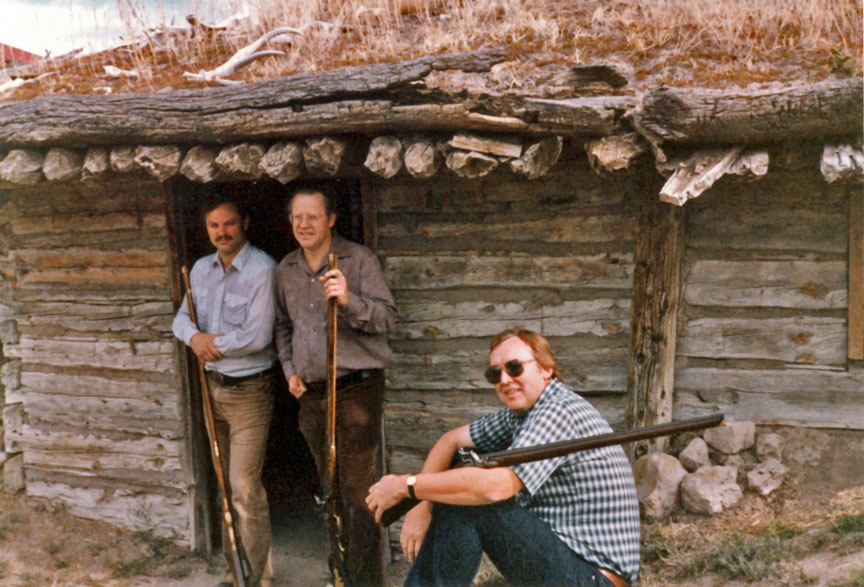
Joe Corley is the one that drew the blue prints that are on the wall in this photo from JJ Henry Artificer's website.
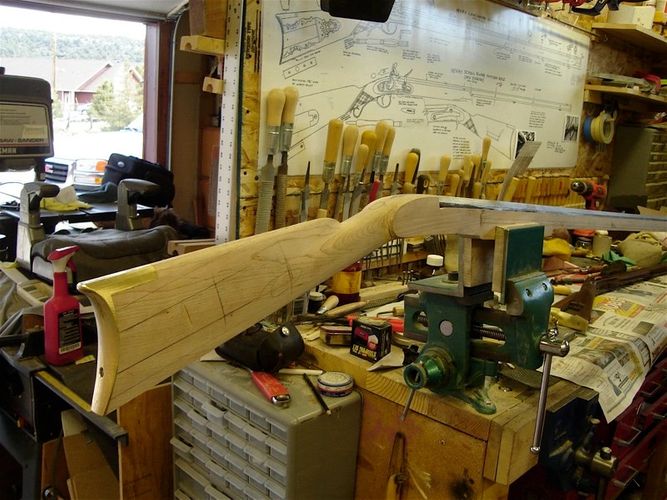
Here are some pictures of a Henry Lancaster pattern trade rifle that David Hoffman built.

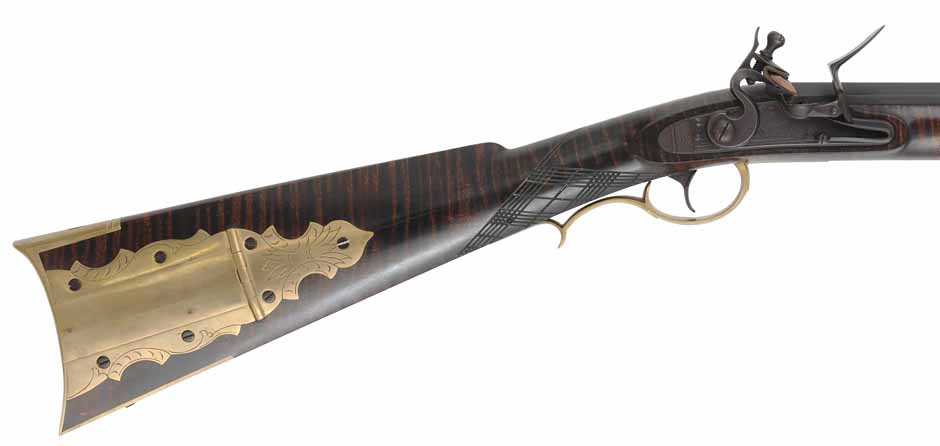
Hoffman modified a large Siler lock on this rifle to make it look English because a suitable commercial English lock just wasn't available back then.
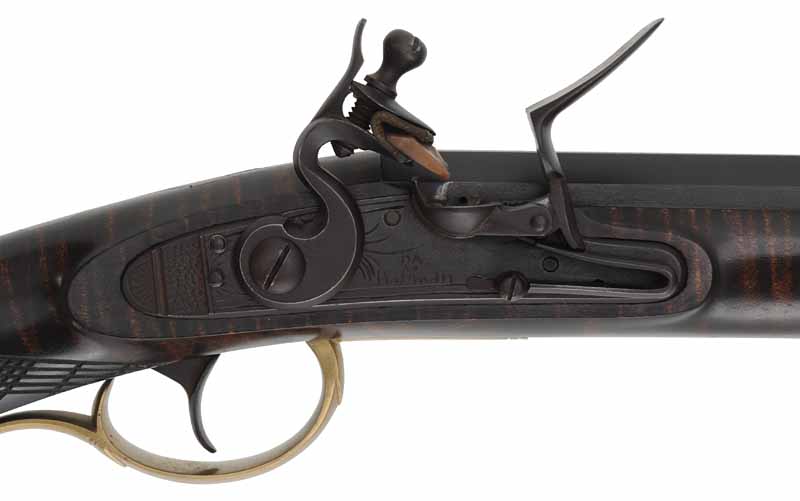
Interestingly enough, at the beginning of the 90's, L&R began producing alternate cocks for the large Siler lock, including a breasted cock. I should mention that this style of cock may be referred to by different names. In the 1991 Track of the Wolf catalog below, it's called a "high crest" cock. I've heard others refer to it as a "pigeon" cock. L&R was cognizant of the fact that many people were wanting to modify the Germanic Siler lock to more resemble an English lock, and produced these variants for a while.
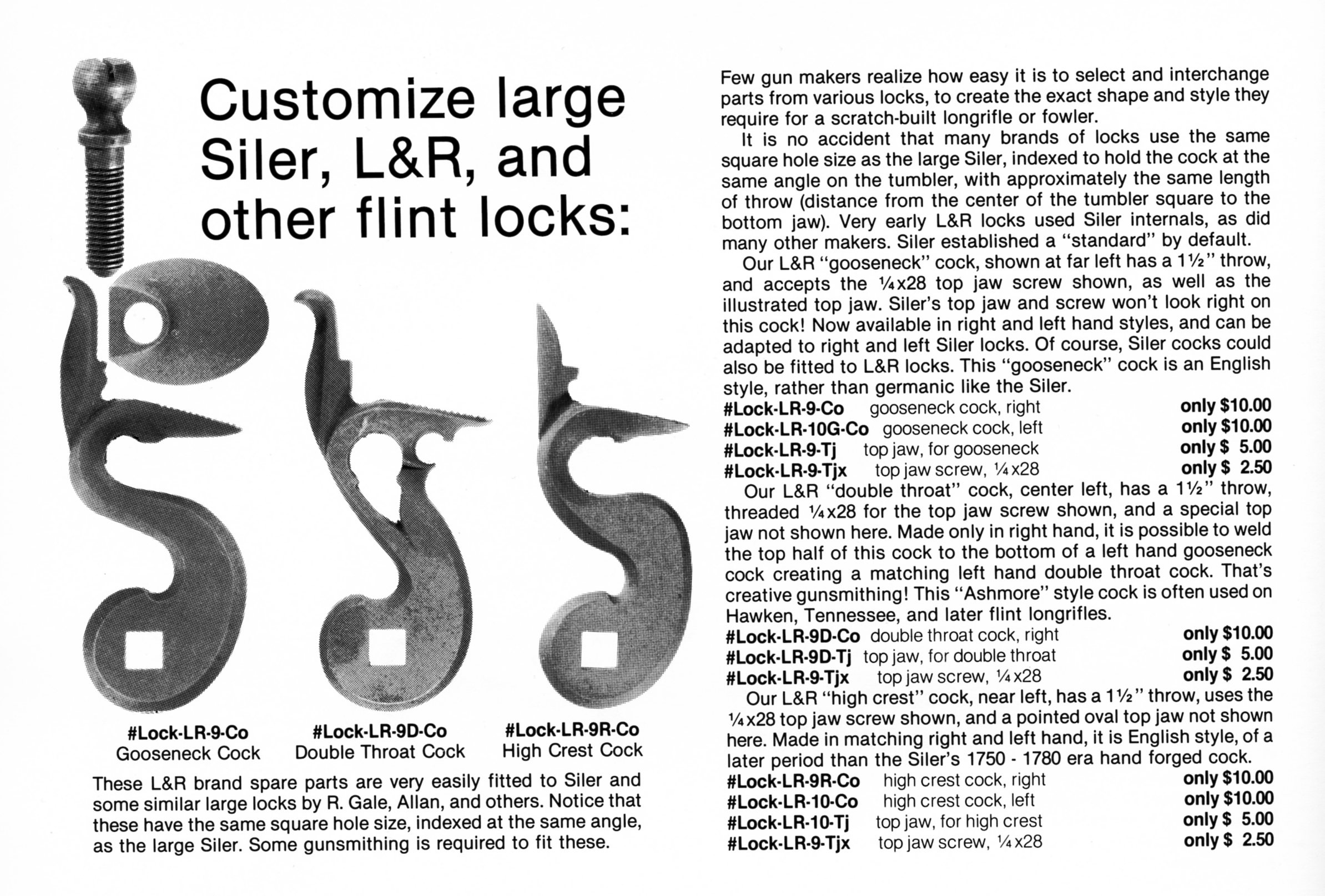
In this picture, I show one of the L&R "high crest" cocks on the left. In the middle is custom cock I purchased from a professional gun builder and restorer. He made the master pattern for this cock and has them cast to use when he gets a job to reconvert a percussion gun of this period back to a flintlock. The cock on the right is a cock from a Ron Long designed late English flintlock that I'm in the process of modifying to make it more "breasted".
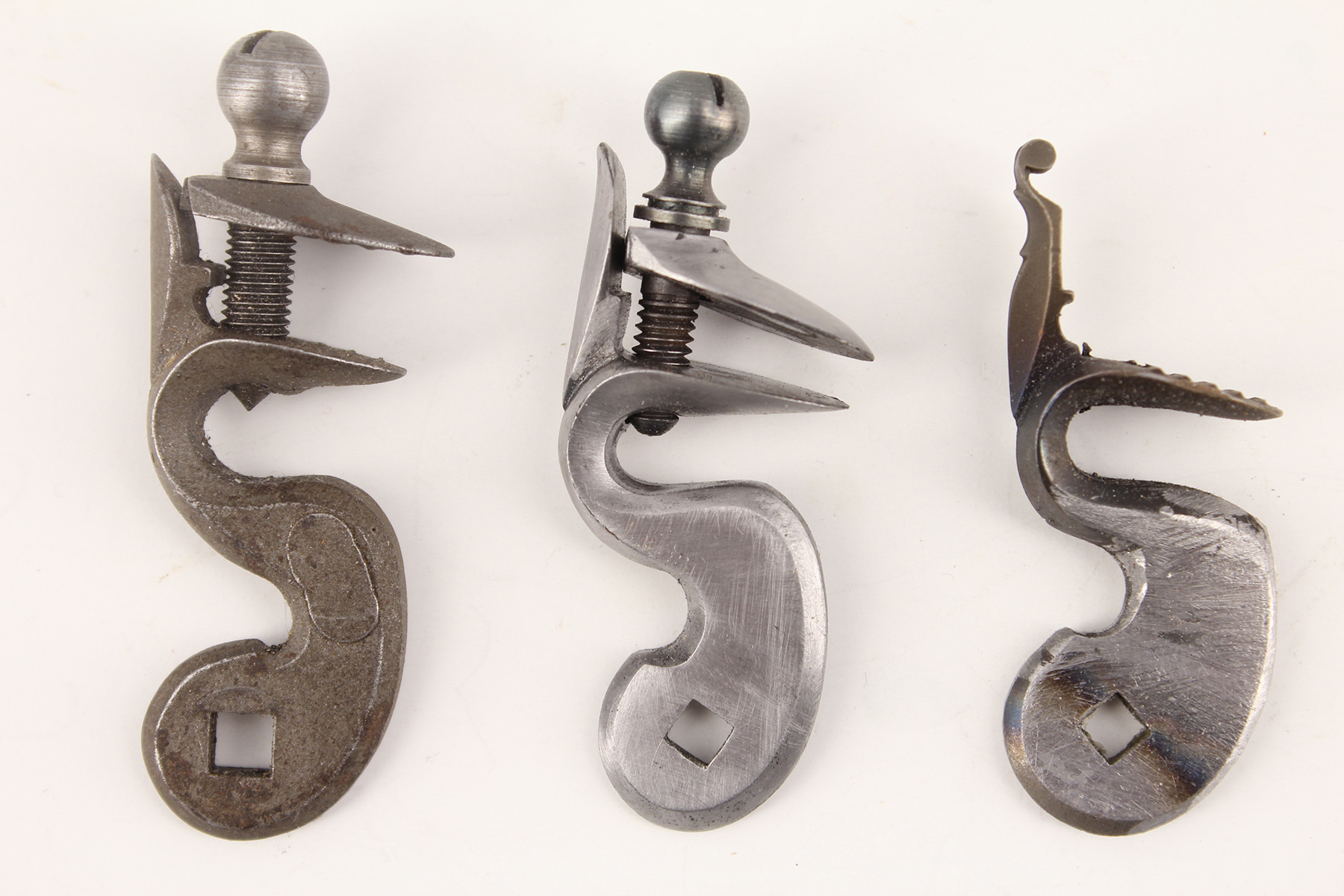
Back to Steve Losey's question, "I would like to find a place that has the correct cock that will work on a chambers lock don't know if the one on the rifle shops lock would work?"
I found the L&R "high crest" cock on eBay and had seen another listed--wish I had got it, too. I don't think L&R is still making these, so this isn't a reliable supply.
If you know anyone doing professional restoration work, they may have a cock similar to the one in the middle that they could supply you with. It's surprising sometimes how many people are privately casting their own lock parts and rifle furniture. Usually, it's for their own use, and they don't advertise the fact.
What I'm doing to the cock on the left may be your best bet, Steve. You could take the existing cock on the Chamber's late Ketland and modify it to form the "breasted" or "high crest" look.
In this photo, I show, with a black Sharpie, where I would remove metal from the front of the Chambers cock .
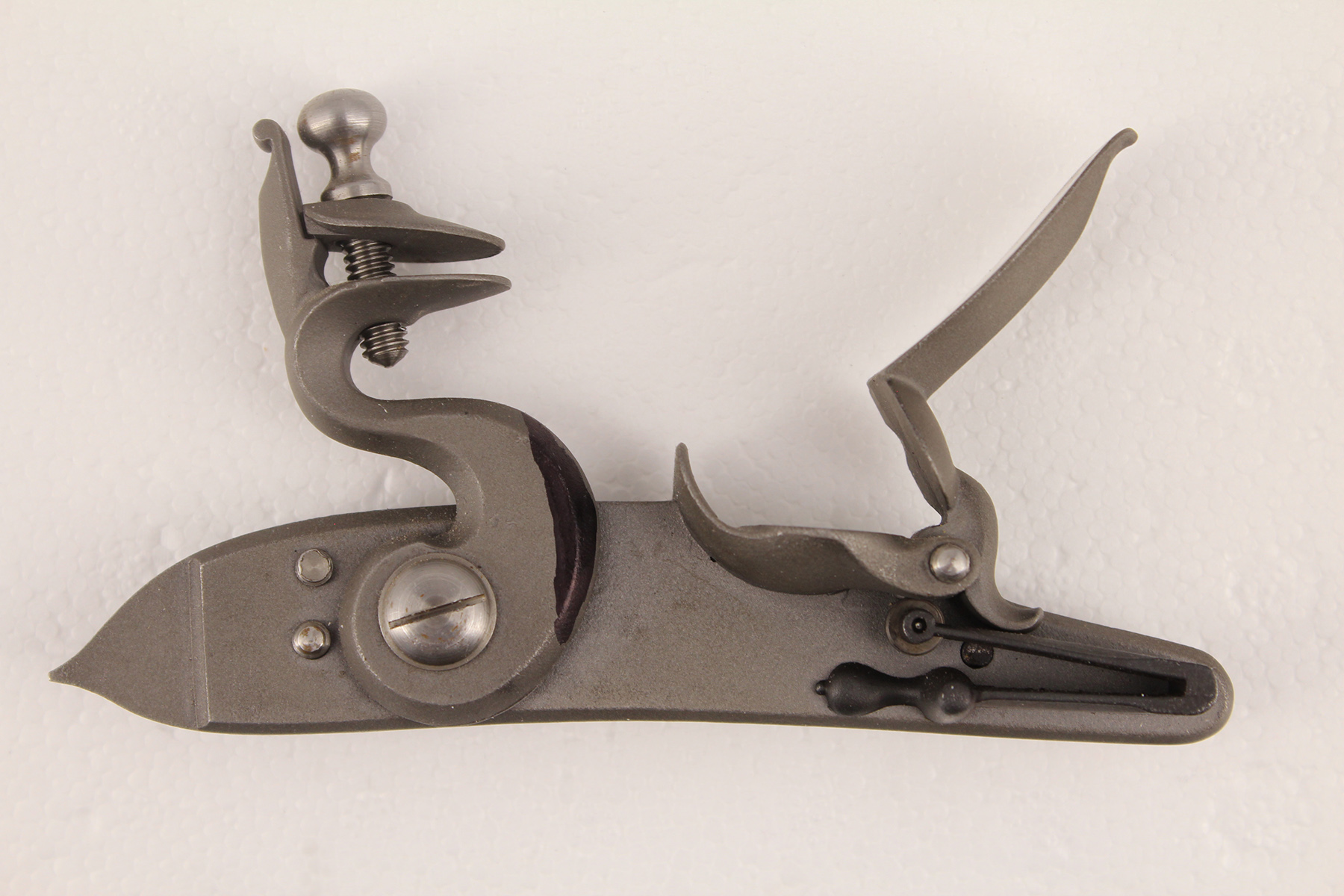
If you had access to a TIG or MIG welder, you could add a little metal to the top of the "breast" to make it look even better.
You might could use the Rifle Shoppe breasted cock on the Chambers Ketland lock. The throw on the Rifle Shoppe cock appears to about 0.1" longer than the Chambers cock. You would probably have to weld up the square hole in the Rifle Shoppe cock and re-drill it to properly time it on the Chambers tumbler, and you could adjust the throw by moving the hole a bit.
Couple viable options for you.
Phil Meek




